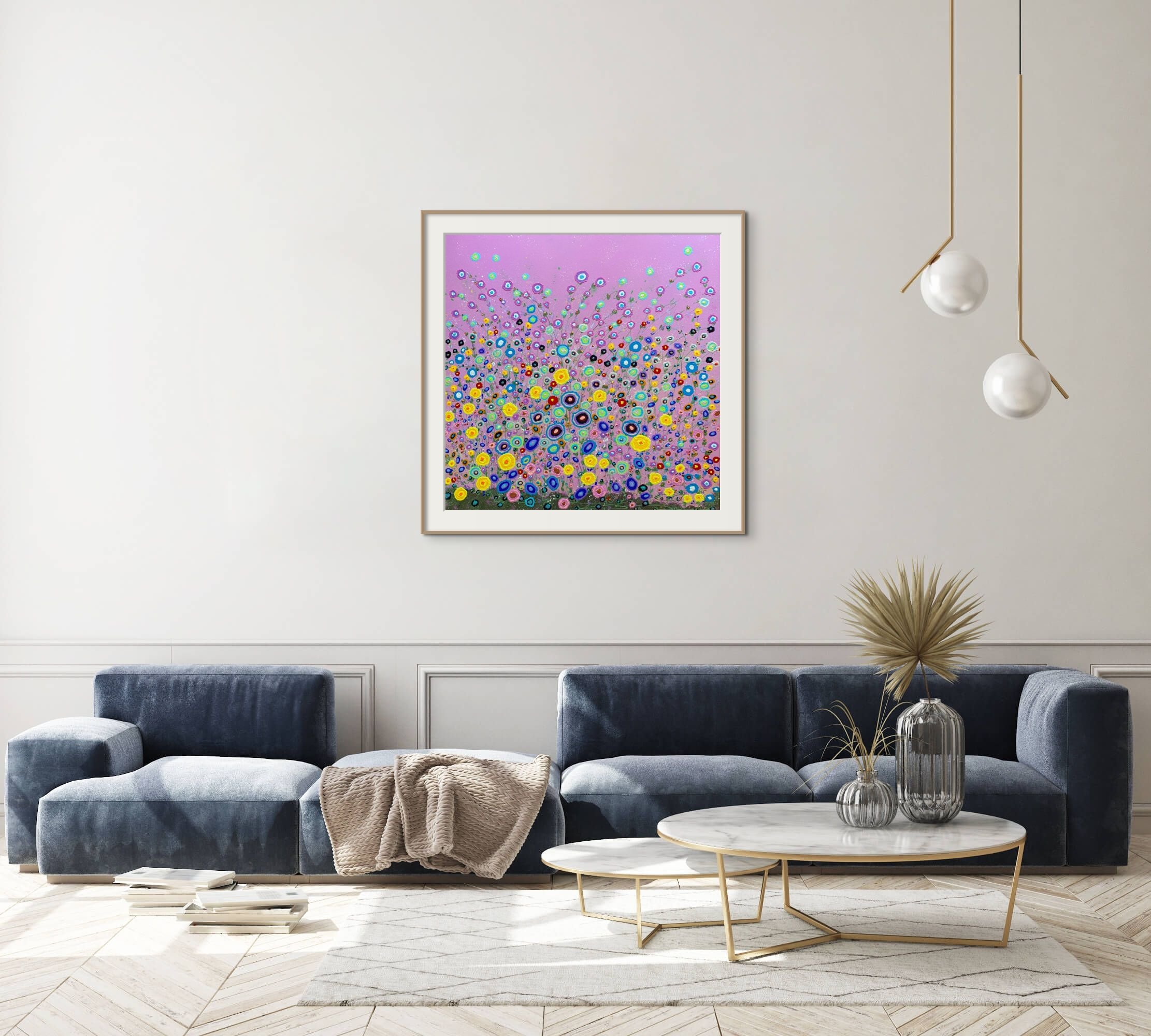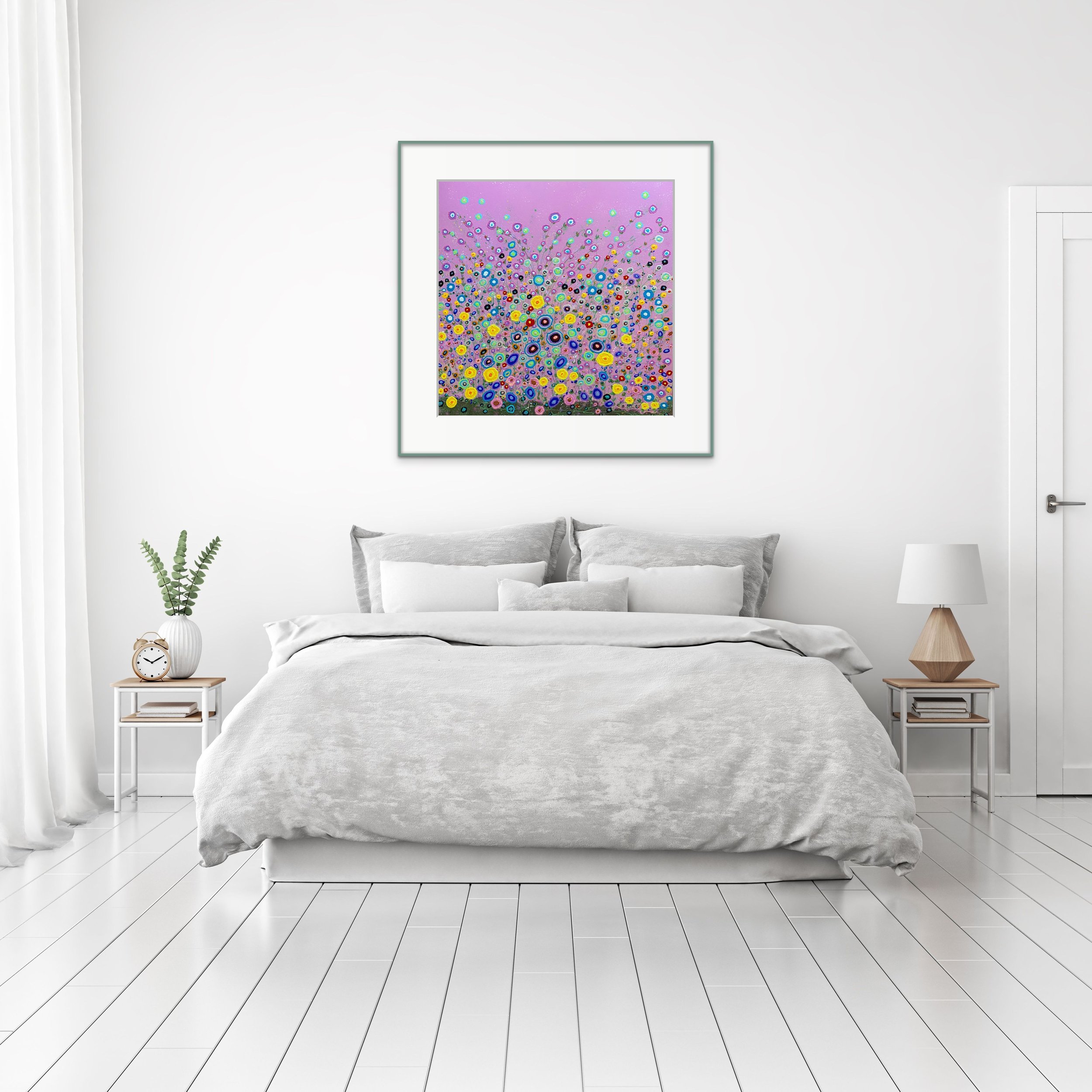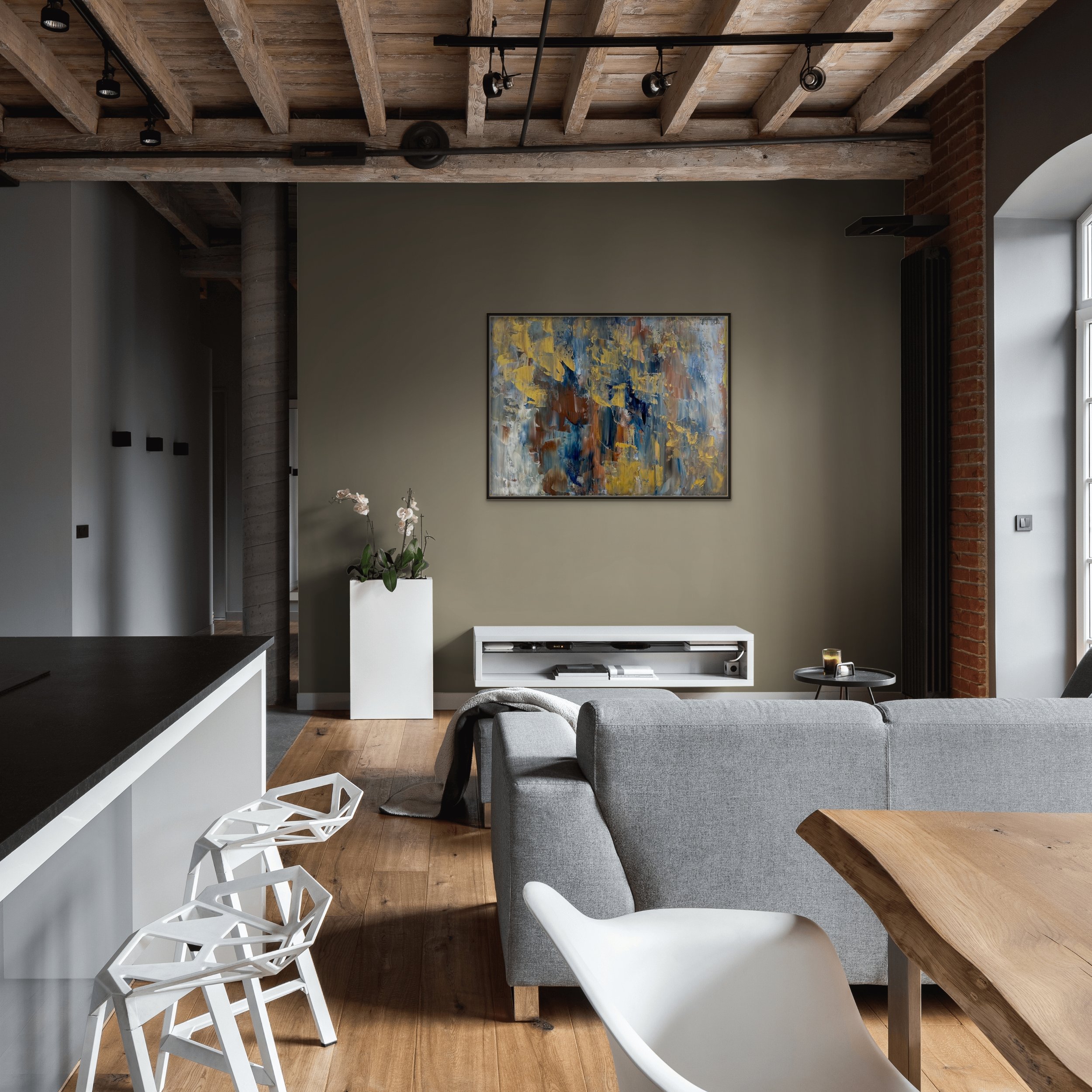Bubbling With Happy Smiles
Today’s art to make us smile.
Creating happiness is a gift, and I love to use my artistic talents to help others smile.
Bubbling With Happy Smiles by Dorothea Sandra
What Happens To Our Brains On Art?
The research results are in: according to The Telegraph in the United Kingdom, “Looking at a gorgeous painting, sculpture, or other artwork, increases blood flow to the brain by as much as 10 percent—the equivalent of looking at someone you love.”
According to professor Pierre Lemarquis, the French neuroscientist who wrote L’art Qui Guérit (Art That Heals) “art of all kinds acts on our brains in a multi-faceted, dynamic way. Neural networks are formed to achieve heightened, complex states of connectivity. Art can sculpt and even caress our brains.”
Isn’t This Exciting?
My goal was to create a work of art that would trigger our brains for fun and laughter and smiles. There’s enough reality in the soil to ground the painting, while the stems take off playfully up and down and around and side to side. The colors are bright and cheerful and full of dynamism and diversity.
So many people have told me this piece instantly busts through bad moods and makes them smile inside. Others have said the flowers communicate that one is perfectly beautiful even when super odd or different or not traditionally formed.
So much of my art is influenced by nature’s water movements and flowers. Here is Bubbling With Happy Smiles, as well as other pieces, on display at the Art In The Loft Gallery in Alpena, Michigan.
People often think of small northern towns as boring. This “authentic arts town” busts with summer activities. Festivals, art, music, water activities, cruise ships docking, amazing natural areas, wildlife, and truly friendly and fun (and open minded) people makes Alpena, Michigan a place I spend lots of time visiting. I’m in two galleries there, and I love it!
Here are some photos of one of the marinas and just one of the many colorful side alleys and back parking lots.





In such a fun and friendly “authentic” place, it’s so easy to get inspired to create happy art. Many of the paintings in my book, 100 Days Of Happy Happy Art, Evidence-Based Design, were influenced by this clean, healthy, and super beautiful area.
This book is not a marketing push. (There are no painting prices published.) It is visually pleasing, as well as an informative journey into a new art field based on science and medical studies called Evidence-based Design.
Creating Power And Beauty In Art
Powerful Beauty is an amazing artwork people love to see.
Powerful Beauty is an amazing piece that people just love to see.
At the opening reception for a summer gallery exhibit, I was standing in front of this painting while talking to a NYC handbag designer for two world-famous fashion brands (who also bought one of my paintings that evening) when a very tall, amazingly elegant woman brushed behind me and whispered, “I l-o-v-e this piece!”
What makes Powerful Beauty such a winner?
To begin with, it was strategically designed to arouse and grab and gently caress. It’s beauty was deliberate and intentional. I am above all else an abstract artist, but I also trained and got certified in evidence-based design. I support the idea of basing designs on actual medical and scientific studies for health and healing and, like the many tools and techniques I use as an artist, I don’t hesitate to use these evidence-based design rules and guidelines while creating even abstract art.
The goal for Powerful Beauty was to create something abstract and full of movement but also balanced, stable, and beautiful to view.
If you would like more information about an artist’s adventures with evidence-based design, check out the book 100 Days Of Happy Happy Art, Evidence-Based Design by Dorothea Sandra.
It’s not just an art book. There’s lots of really cool and thoughtful information in it like, “What Exactly Is The Definition Of Evidence-Based Design?” (Section 1.4) to “What Happens To Our Brains On Art?” (Section 3.1) and “What Is Neuroarts?” (Section 3.2).
So, where did I get the inspiration for this piece? My studio is located in a Great Lakes region surrounded by amazing bodies of water. Almost everywhere I go, I am surrounded by raw, authentic, super clean NATURE. At first sight, this area might look ordinary or just another stretch of beach with rocks and sand, but when you look deeper and capture “the essence” of what is happening all around, it’s truly amazing. There’s always some kind of power or beauty happening.
This painting also made an appearance in the July issue of the London Tatler magazine. It’s #23.
Welcome
Welcome to the wonderful world of Dorothea Sandra Art.
YOU HAVE ARRIVED AT THE WONDERFUL WORLD OF DOROTHEA SANDRA ART!
BLOG #1—From Death To Life
A number of years ago I got diagnosed with two potentially life-ending illnesses. I was surprised when most family, friends, and people I had known for years politely dumped me. Essentially, I was left on my own and alone (with the exception of one brother) to go off into the wilderness and die somewhere.
Well—not only did I not die—I ended up creating a super fun, happy, and absolutely amazing new life. Welcome to the wonderful world of Dorothea Sandra art. Today I’d like to share the power of abstract art and photos and excerpts from my new book 100 Days Of Happy Happy Art, Evidence-Based Design.
Power In Action by Dorothea Sandra
Power In Action is a bold abstract. It reflects the awesomeness and diversity of real power. Done mostly with palette knives, it has intense movement and edge, while still maintaining balance, beauty, and grace. I really like the gold touches. They are there to show that having an abundance of wealth is a fun thing.
I was trained as a child to paint in oil, but today I find super high quality professional-level acrylic paint to be so much more fun. I love the ease in which it goes on, and the colors can be truly amazing. In this painting you can see the influence of the late Roger William Curtis, the famous New England seascape artist. My earliest teachers were trained by him. I still remember wiggling my toes in the damp Gloucester sand while listening to the paint mixing instructions for creating sea spray, water depth, and ominous rocky shores.
In addition to my love of abstract art, I also wrote a book called 100 Days Of Happy Happy Art, Evidence-Based Design. My brush with death had opened my eyes to the importance art can have on the brain, which helps with health, healing, and happiness. I got trained and EDAC (evidence-based design) certified through the Center For Health Design, and it has been one happy artistic adventure after another ever since.
Did you know evidence-based designs use credible medical/scientific studies in their design guidelines? Here is Section 1.1 from my new book.
IS EVIDENCE-BASED DESIGN SOMETHING TOTALLY NEW?
“If you asked the sixth-century BCE Greeks of Epidaurus, they might take you to one of the most celebrated healing centers of the classical world—the Asclepieion hospital. In their hospital, patient rooms faced eastward. Why? It is believed the rooms were intuitively designed and placed toward the sun to promote healing.
Many centuries later, many movements from different countries came together in the 1970s to create a new field called Evidence-based Design.
Who are the people whose forces created this new discipline? Doctors, scientists, architects, interior designers, psychologists, sociologists, anthropologists, and many, many others.
DAY ONE of 100 DAYS OF HAPPY HAPPY ART
The Healing Window, 36”x48”
I’m known as many things in the art world—an artist of hope, an artist who modernizes traditional woodsy compositions, a New England trained artist, a Great Lakes artist, and a 21st century experimental artist.
As a 21st century experimental artist, I like bringing together totally new or different things. Bringing together today’s health, while also thinking of the ancient Greeks, Day One of 100 Days Of Happy Happy Art features a painting of a window view a patient might see from a hospital room.
This painting’s background is of Little Traverse Bay from the back parking lot of the McLaren Northern Hospital in Petoskey, Michigan.
As I composed my images, I imagined I was inside one of the McLaren Northern patient rooms looking out. The flowers are modern and cheerful and uplifting, but I wanted to honor the achievements of those before us by giving elements within the composition a more rough, ancient Greek Asclepieion feel to it.”














































